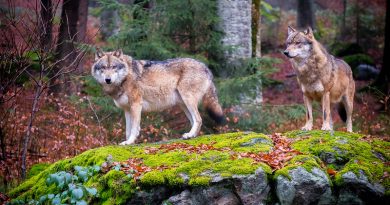Prehistoric Oddity: The Legendary Kiwi Bird
Nature Facts
Where: Stewart Island, New Zealand
Facts: The kiwi cannot fly & lives like a mammal in a burrow
Famed For: The national symbol of NZ, known as the ‘god of the forest’ by the Maoris and a nickname for New Zealanders overseas.
The emblem of New Zealand, you might be surprised to be told that the almost cartoon-like bird the Kiwi really does exist. It is one of the few surviving relatives of the Moa (a predecessor of the Ostrich, long extinct), which goes a long way to explain its odd, prehistoric appearance, and experts believe that Kiwi’s existed as long as 70 million years ago. Now, a handful of different species survive, all with slight variations in their appearance and behaviour.
Kiwi habits and habitat
The kiwi is named after their nocturnal call which sounds something like ‘kiwi, kiwi’, which is usually heard about an hour before and after dark. They are also detectable by the loud snuffling noises they make as they search for food. Their appearance is very unusual, they are roughly the same size as farmyard chickens, with earthy brown feathers, that have a slightly rough and ragged appearance, they also have long, downward curving bills, and stubby remnants of wings. They are rarely seen due to their shy nocturnal habits and seriously diminished numbers, which are declining at about 6% a year, meaning that their population approximately halves every ten years. Sightings are also made tricky by their skills in camouflage, they blend in perfectly with the bush, and build burrows well in advance so foliage can grow back over entrance before use, they then will cover the entrance carefully with twigs on departure.
Despite their classification as birds, the kiwi bears many similarities to a mammal, especially in their forest floor habitat, and dependence on a highly developed sense of smell, rather than sight as most birds are, which they use to seek out their diet of small insects and fallen fruit. They are flightless, nocturnal, and live in underground burrows which they dig with their feet, and have large territories of which they are very protective – they can be very aggressive, kicking and scratching opponents with sharp claws.
Gender politics
Kiwis live in pairs as monogamous couples for almost all of their lives, but the sex roles are reversed, the females are noticeably larger and dominate the males, while it is usually the males that incubate the eggs. They breed from May to June, and the young leave the nest after just 2-5 weeks, while they are still very vulnerable, which also contributes to their diminishing numbers. If they do survive, they can live up to 40 years.
Tribal worship
The kiwi also has special significance to the Maori, who consider it to be the oldest child of Tane Mahuta, the god of the forest, which means that to the Maori they are the elders of humans, and protective of us. A Kiwi feather cloak is a sign of chieftainship and high birth, and has great significance as the feathers are thought to carry the spirit of birds in them.
Where to Spot a Kiwi
Stewart Island one of best places to try and see Kiwi’s as it has one of largest population densities, plus Stewart Island Kiwi’s come out earlier than other varieties, and can often be seen just before dusk.
MORE INFORMATION
Kiwi Recovery
Charitable organisation looking into ways of preserving the diminishing numbers of Kiwi in New Zealand. The Site provides comprehensive information about the Kiwi
NZ Birds: Kiwi
Site giving introductory information on many different New Zealand birds, including a feature on the Kiwi.
Kiwi Newz
Info site on the Kiwi, including the Maori myth of how the Kiwi lost its wings
By Guilia Vincenzi




